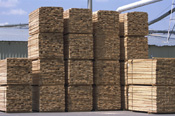
|
|
Prefabrication
 Prefabrication has been used for hundreds of years in one form or another. And today more and more manufacturers are using this technique, especially in the building industry, to save time and money. This article discusses more about prefabrication, what it is, who uses it, and the drawbacks as well as the benefits to using it.
Prefabrication has been used for hundreds of years in one form or another. And today more and more manufacturers are using this technique, especially in the building industry, to save time and money. This article discusses more about prefabrication, what it is, who uses it, and the drawbacks as well as the benefits to using it.
|
|
What is prefabrication?
When part of a structure (such as a building) is put together at the actual manufacturing site and then after it is partially assembled it is taken to the construction site where it will continue to be completed it is called prefabrication.
Who uses prefabrication?
There are many different manufacturers that use prefabrication when they are producing their products. Many of the manufacturers that use prefabrication build building. Some parts of a building can be put together before it is brought to the site where it will be located. A few of the things that can be prefabricated include: stairs, doors, floor and wall panels, even the whole building. Towers, spacecrafts and aircrafts can also be prefabricated.
Drawbacks of prefabrication
One of the drawbacks for a manufacturer who uses prefabrication is that the product does have to be transported and this can cost a lot of money. Since it needs to be transported, the product needs to be packed very well and handled carefully so that it is not damaged during the transportation.
Moving many of the parts that have been made and then transported can also be a big job. Some of the bigger pieces of a building or an aircraft have to be moved by a crane. This is a big job and can require many people.
To put the pieces together once they are at their end location it can take a lot of careful measuring to make sure that they end up in the right place. If the pieces are not put together correctly problems such as leaks and corrosion can occur in the building later on, damaging the integrity of the building.
Benefits of prefabrication
One of the great benefits to using prefabrication is that less time is spent at the construction site. Usually the construction site is a dangerous place when the entire building is being put together. But when most of the pieces are put together in a warehouse, the hazards that are at the construction site will be reduced.
When things are put together during the manufacturing process, more of the extra raw materials can be recycled. Most of the time workers just end up throwing away extra pieces of raw materials when they are at the construction site. But those same pieces can more easily be recycled when they fall to the floor during manufacturing.
The costs of raw materials, overheads, power, space, and labor will likely be less at the manufacturing site compared to the construction site. This can save the manufacturer, builder, and the customer a lot of money. And time can be saved by eliminating the extra congestion that is usually at a regular job site.
When a manufacturer uses prefabrication the building or other products they are making usually gets completed in much less time than if it had to be built completely at the building site. And it is much easier for the manufacturer to control the quality of the product if most of the work is done during the manufacturing process.
Privacy Policy, Terms of Use